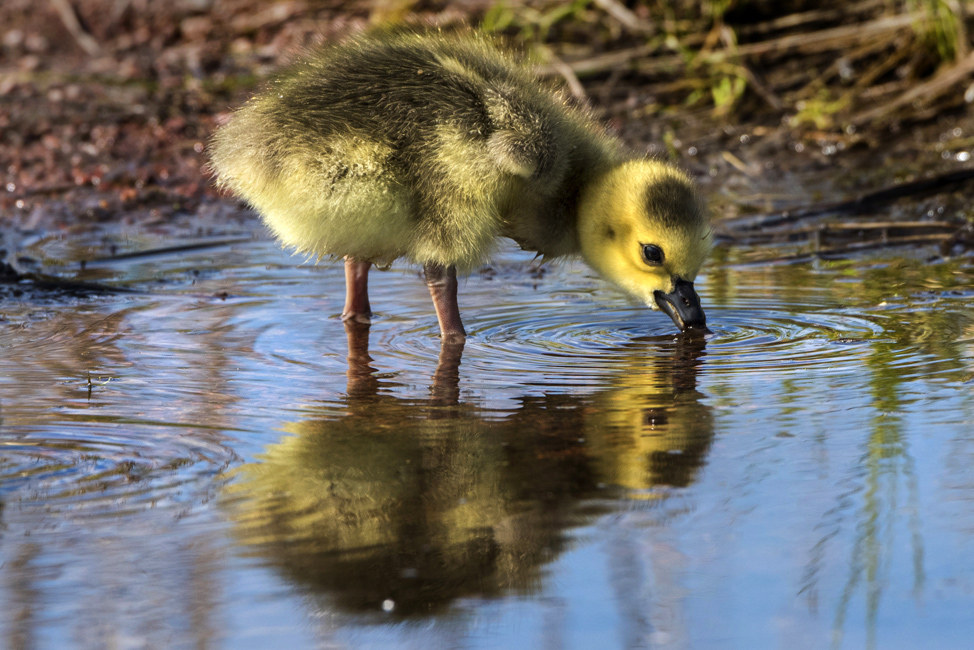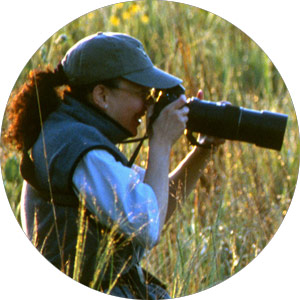For Great Nature Photos, Look Close to Home
Professional photography is a balancing act.
What you want to do most is the photography, but you can't ignore the professional: the business. The trick is to maximize the picture-taking opportunities, which is a strategy dedicated photo enthusiasts can appreciate.
We spoke recently with nature photographer Carol Freeman, who keeps her balance by taking full advantage of photographic opportunities close to home.
"If I have a three-hour window for photography, I don't want to spend two of those hours driving," Carol says. Which is why she's explored and cultivated places near her Glenview, Illinois, home. "And photographing close to home is no sacrifice of photo opportunities," she adds. "People come from all over to photograph at places near me."
Not surprisingly, Carol says that chances are good you can easily discover and explore close-by nature photography possibilities. "Just go to Google maps and look for green areas near you. You'll be surprised how many parks and nature areas are right around you." Add in rivers, ponds, wetlands or marshlands, and there'll be even more opportunities. "You don't need to travel a lot. There's probably native drama going on in your backyard—just look for it. Put out a bird feeder, and you'll get birds in 15 minutes."
Carol has even paired local-area exploration with an ongoing self-assignment, a project she calls "every day in May." The main idea is to get photographs of warblers—small songbirds named for their warbling vocal stylings—that migrate through her area. "You only get to see them in their beautiful breeding colors for about three weeks in May," she says, "and the magic of migration is that birds will come to you."
Carol photographs a lot of warblers, and there are also a great deal of "waiting for warblers" photos—"other amazing pictures I get because I'm out there every day."
Day Trips
Photographing close to home means you can, if you like, carry a fair amount of gear in your car, but Carol doesn't do that.
"In springtime my photography is almost all about birds," she says, "so I'll bring the 80-400mm [AF-S NIKKOR 80-400mm f/4.5-5.6G ED VR], which is my longest lens. If there are no birds, I can shoot flowers with my 200mm micro [AF Micro-NIKKOR 200mm f/4D IF-ED}, and with the 200mm on the camera, if I'm shooting a flower close-up and a bird flies by, that lens is long enough."
Once summer comes she'll bring along her AF-S Zoom-NIKKOR 17-35mm f/2.8D IF-ED and her AF Micro-Nikkor 105mm f/2.8D. "I'll be looking for landscapes, close-ups and the combinations of flowers, patterns and textures that are so rich in June, July and August."
Seasonal lens selection has to do not only with subjects, but with the idea of inclusion and exclusion. "Spring is an ugly season in some ways," Carol says. "Bare trees, leaf litter on the ground, and with the 80-400mm I can often crop those things out."
To keep weight down, she carries one camera—most recently it's the D810—and 99 percent of the time she will leave her tripod at home. If flash is needed for, say, a prized species in deep, dark woods, she'll pop up the camera's built-in flash.
Close to home or not, weather can be a problem, as "every day in May" can mean clouds and rain from time to time. She won't go out in a storm, but is not deterred by a forecast and will shoot until the rain comes. In fact, she tells us that 30 percent of her best images come out of May and "sometimes the worst weather brings out the best birds, as the birds are actually migrating ahead of a storm."
Besides, she adds, "There's something magical that happens when you go out no matter what. Weather can force you to look at things differently, to get out of your comfort zone."
Plus she's always prepared for the weather. A plastic bag with a hole in it serves to protect the main parts of the camera, and she'll wear a rain jacket into which she can tuck the camera if she's caught in a downpour. Everything is carried in a fanny pack—lenses, lens cloth, water bottle, bug spray and a first aid kit. For Carol the pack beats a bag every time, as it keeps her arms free, and she doesn't have to worry about putting a bag down on wet ground in order to maneuver and shoot.
Completing her outfit are waterproof and insect repellant-treated gaiters over her shoes. "They keep the ticks away, the shoes from untying and the laces from snagging on branches. I look a little silly, but I don't care."
Silly? We don't think so. We think she looks like what she is: a professional photographer.
Carol Freeman's Selected Home-Made Photo Tips
-
For the best photos close to home, do a little research to learn what you can expect to see and photograph.
-
The interaction of an insect on a flower kicks an image up a notch.
-
Hand-holding? Figure ISOs of 400 to 800, but don't be afraid to push to 1000 or 1250 to get faster shutter speeds if you need them.
-
Carol's mantra: "The birds are not better someplace else." If you find a pocket of birds, stay where you are.
-
When photographing birds, take a picture, then a very slow step forward. Then another picture, another step, and so on. Avoid the up and down motion of the camera to and from your eye that most often spooks birds. Dragonflies and butterflies, too.
-
Plants that stand up, away from other plants are best for soft backgrounds. Get low; there's often no picture standing up.







